This review has not been influenced or sponsored in any way. These are my personal observations, reservations and opinions about a lens that I purchased with my own money.
The Risespray 8mm f3.8 Fish Eye :
The Risespray 8mm f3.8 Fish Eye lens designed for Micro Four Thirds (MFT) cameras is marketed under various names such as Pixco, Sonovel, Fotasy, etc, and sometimes referred to as model Mil-0838. Curiously, the lens itself, its packaging, or website fail to disclose information about the actual manufacturer.
Through research I have found substantial details and similarities to this lens, and the most probable manufacturer appears to be Cheecar.com, or more precisely, the Fujian Cheka Photographic Equipment Co., Ltd. While this particular lens may no longer be explicitly listed on their website, the model type designations on their site strongly indicate their involvement. Additionally, I’ve identified other lenses in their product lineup, including those from Risespray, Pixco, Pergear, Brightin Star, affirming Fujian Cheka Photographic Equipment Co., Ltd.’s role in producing a diverse range of lenses.
Available in various camera mounts, including C mount, in which case the lens may be supplied with or without an adapter to facilitate compatibility with different camera systems.
After an online search I found various brand and price differences. At the time of purchase, the Risespray model stood out as the most appealing offer, priced at €56 including shipping, whereas the Pixco model was around €72. This makes the lens the most affordable 8mm Fish Eye lens available, considering that a Samyang 8mm f3.5 lens costs approximately €300, although it is, of course, of much higher quality.
Unboxing:
The Risespray was delivered in a mint-colored cardboard box with gold lettering, giving the impression of containing a jewel. The lens itself was securely packaged in a vinyl-feel bag nestled within a foam interior. The box also included a black water-resistant lens pouch with a drawstring, and a plastic bag containing a lens cleaning cloth with the brand name printed on it.
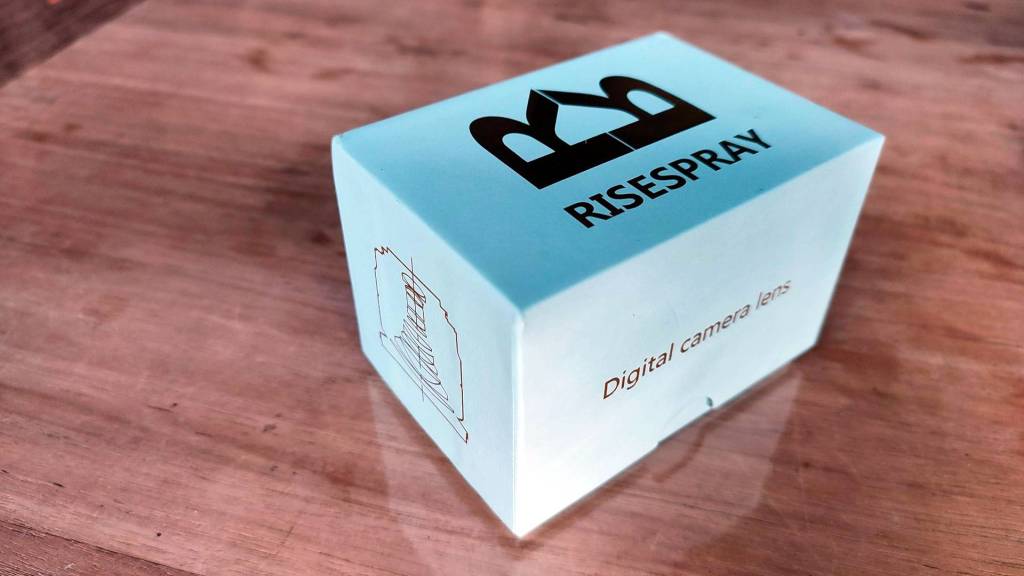
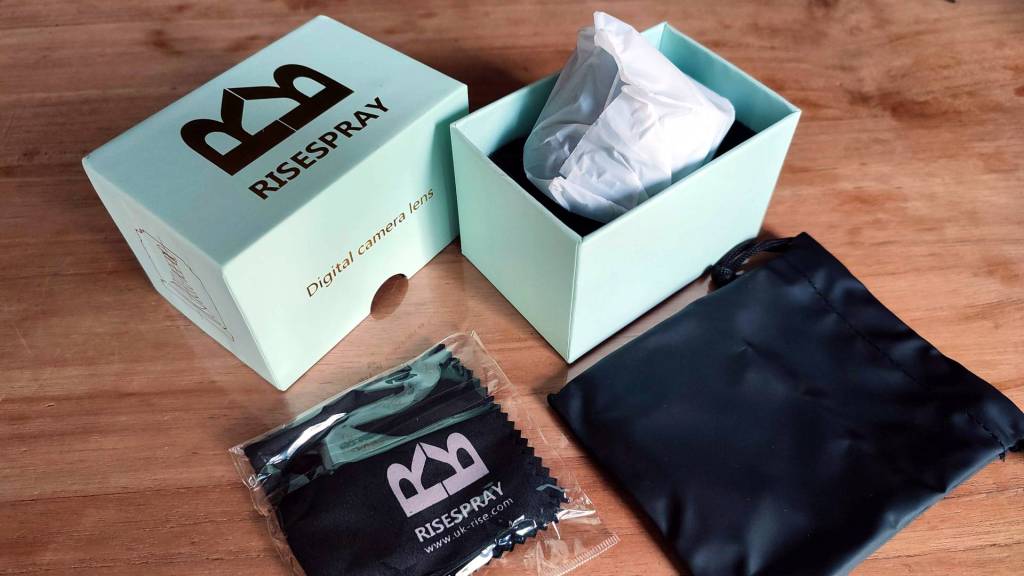
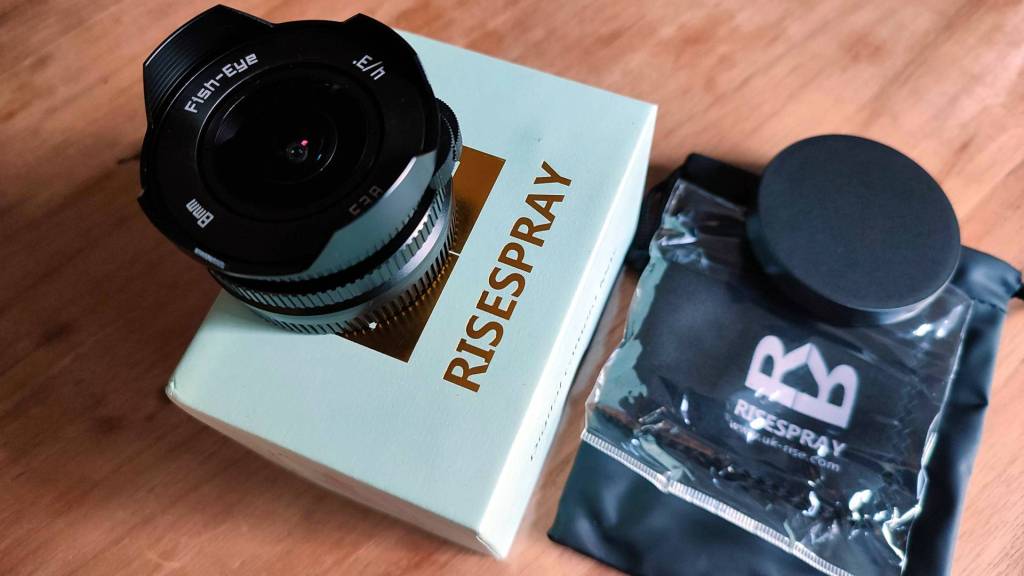
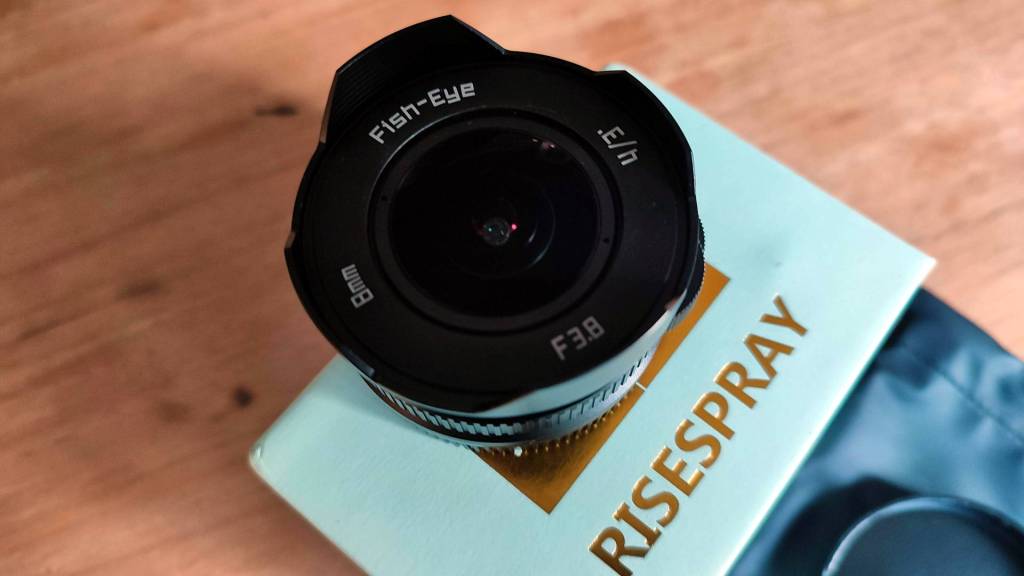
Risespray spec. : Lens mount: For Micro Four Thirds, Focal length: 8mm, Aperture: F3.8, Elements/groups: 6/5, Angle of View (AOV): 180° ,Aperture blades: 6, Minimum focus distance: 80mm, Front thread diameter: None, Length (including hood): 43mm, Width (including hood): 63mm, Weight: 160g, Focus & aperture: Manual, Color: Black
Actual spec. : Lens hood diameter : 62.5mm, Length from mount to end of lens hood : 38.35mm, Real lens lenght without hood : 16.85mm (the lens hood is not removable !) Weight : 112gr
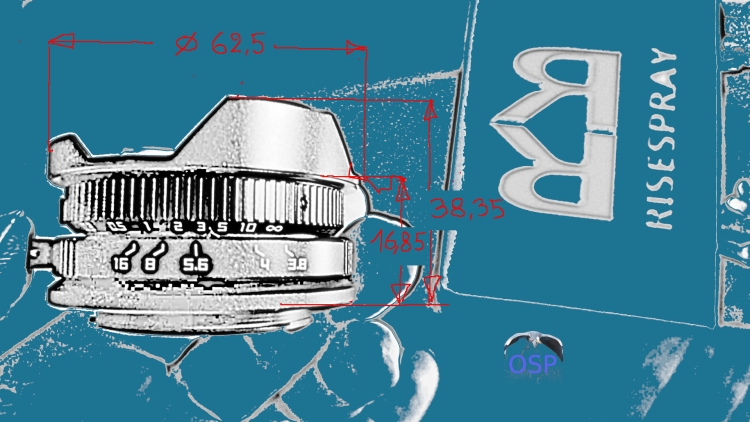
Tiny Lens ?
Well, this 8mm fisheye is about 40mm long, including the lens hood, but the lens itself is only 17mm. The lens hood doesn’t really disrupt the impression of a small lens, mainly because the protruding parts of the lens hood are proportionally small compared to the lens diameter, yet they are efficient for protection. Below is a comparison between the E-PL6 with the 8mm lens and the E-PM1 with the 14-42mm lens in action. I find the 8mm to be quite tiny and unobtrusive compared to the 14-42mm.
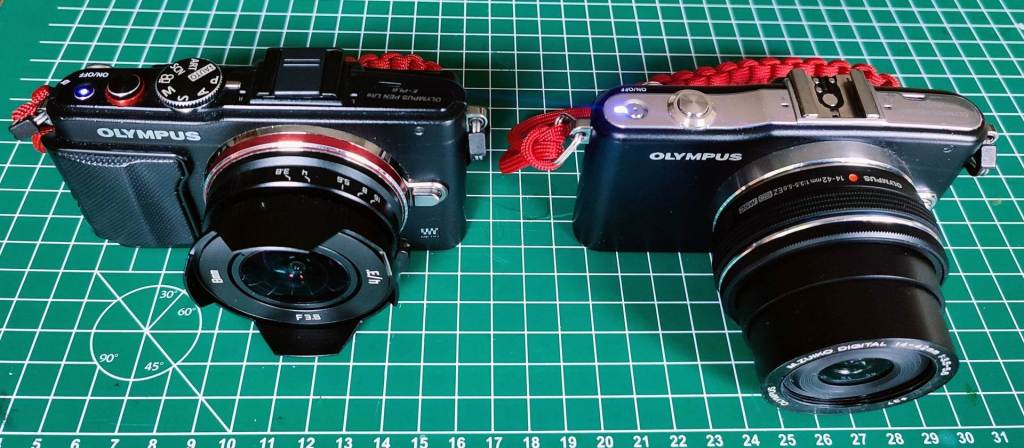
Lens Handling & Performance :
It is a metal build manual lens with fixed lens hood in hard plastic and no electrical contacts. Therefore, you need to set your camera for manual lens use. It’s important to specify the lens’s focal length in the camera settings for IBIS. This information will also be included in the EXIF, but details like aperture and other settings won’t be.
The lens has two prominent levers for adjustment—one for aperture, closer to the camera body, and one for focusing, a bit further forward on the lens. The aperture lever is relatively easy to operate, being closer to the camera body and slightly longer than the focus lever. The aperture is clickless. The reference point for the setting is between the aperture ring and the focus ring, with less than a millimeter between them, making it barely visible.
The focus lever is one millimeter shorter and is positioned between the lens hood and aperture lever, making it challenging to locate and adjust. The focus lever should have been the longest one. The distance scale on the lens doesn’t align with reality. Setting to infinity seems to be between 3 to 10 on the scale, and other listed distances appear more like numbers than meters. This observation is shared by other reviewers, such as Rob Trek. Setting the lens to hyperfocal distance at around 5 and aperture 5.6, as suggested by Rob, didn’t yield the best results in my experience. When I magnified to focus on a subject approximately 10m away, the distance scale showed between 0.3m and 0.5m.
Unfortunately, turning the focus ring forward or backward also affects the setting, and different lens copies may provide different results. It’s advisable to take some test shots, and to choose a focusing point about 5m to 10m away, focus on it using magnify and focus peaking, and then set aperture to f5.6 or f8. Review the test shots for sharpness and try to memorize that exact focus point on the scale, and you’ll always achieve the best possible result that suits your lens copy, ensuring sharpness from about 1m to infinity. You could even try settings for, for example, a person, street and landscape and in this way always have the most optimal settings for two or three different situations.
The included lens cap is plastic and doesn’t stay securely on the lens—this is because it’s slightly too large. However, aligning the four subtle raised parts on the inside of the lens cap with the four protruding parts of the lens hood and applying slight pressure will produce a click, securing the lens cap better.
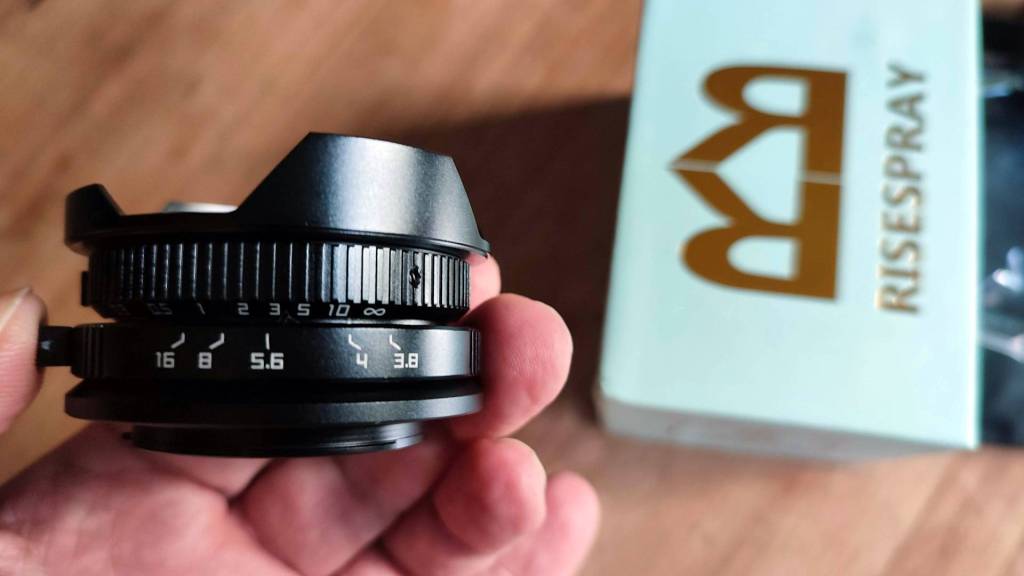
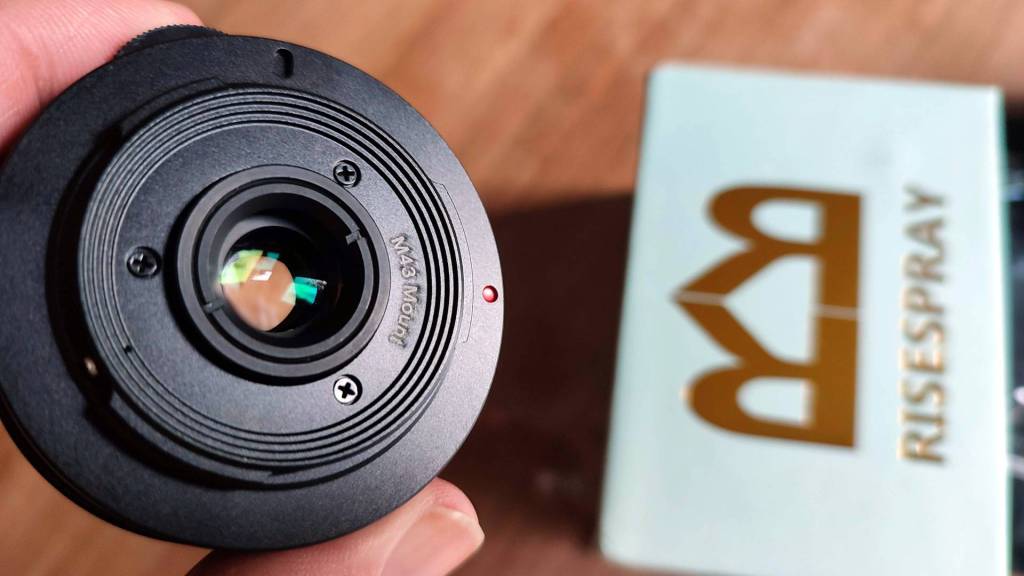
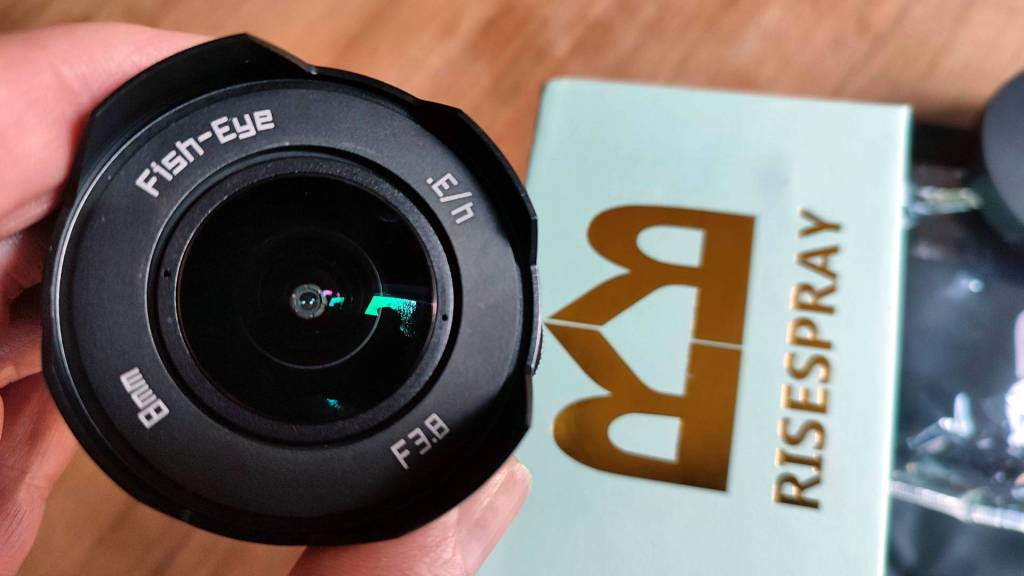
It’s not a lens for pixel peepers, so don’t expect 100% sharpness, especially towards the edges. The best sharpness is in the central area. Cropping for details in a photo is not recommended. However, compared to many expensive lenses, the sharpness is certainly not bad, even in the edges. For normal use, meaning publishing photos on the internet or printing on postcards or A4 (US Letter), this lens will suffice, even at f3.8.
That being said, the sharpness does improve significantly when stopping down to f5.6 – f8.0. Unfortunately, adjusting it is not as straightforward due to the levers being closely positioned. Therefore, it’s essential to be cautious during adjustments to avoid accidentally changing the aperture while focusing, and vice versa.
This lens is ideal for anyone wanting to capture general scenes without focusing on details or intending to crop (much) later. It’s great for overview photos of landscapes, architecture, beaches, sunsets, street photography etc. Keep in mind the price range of this lens—it can produce good and enjoyable images, but don’t expect the quality of a lens like the Olympus 8mm f2.8, which costs almost ten times more.
Links and What Others Are Saying :
There are reviews, like the one from Rob Trek, that evaluate this lens as it deserves, taking into account both its price, target subject and audience—honest and unbiased. There are also other videos advising against purchasing this lens, but frankly, if you’re someone who seeks high quality, then why buy a €60 lens ? Personally, I also own the Samyang 8mm f3.5, which is much sharper towards the edges, but I find the price difference to be quite significant. I view this lens more as a creative tool, suitable for endeavors like street photography, festivals, and events where capturing the moment holds greater importance than top-notch image quality.
Two lenses in one :
A useful trick that you can also apply to our Olympus camera is using the DTC (Digital Tele Converter). This transforms your 8mm Fish Eye lens into a 16mm wide-angle lens. The advantage is that by doing so, you utilize the central portion of the lens, enhancing sharpness. The field of view (FOV) in 35mm film format is 16mm Fish Eye in normal use, and a 32mm wide-angle lens with DTC.
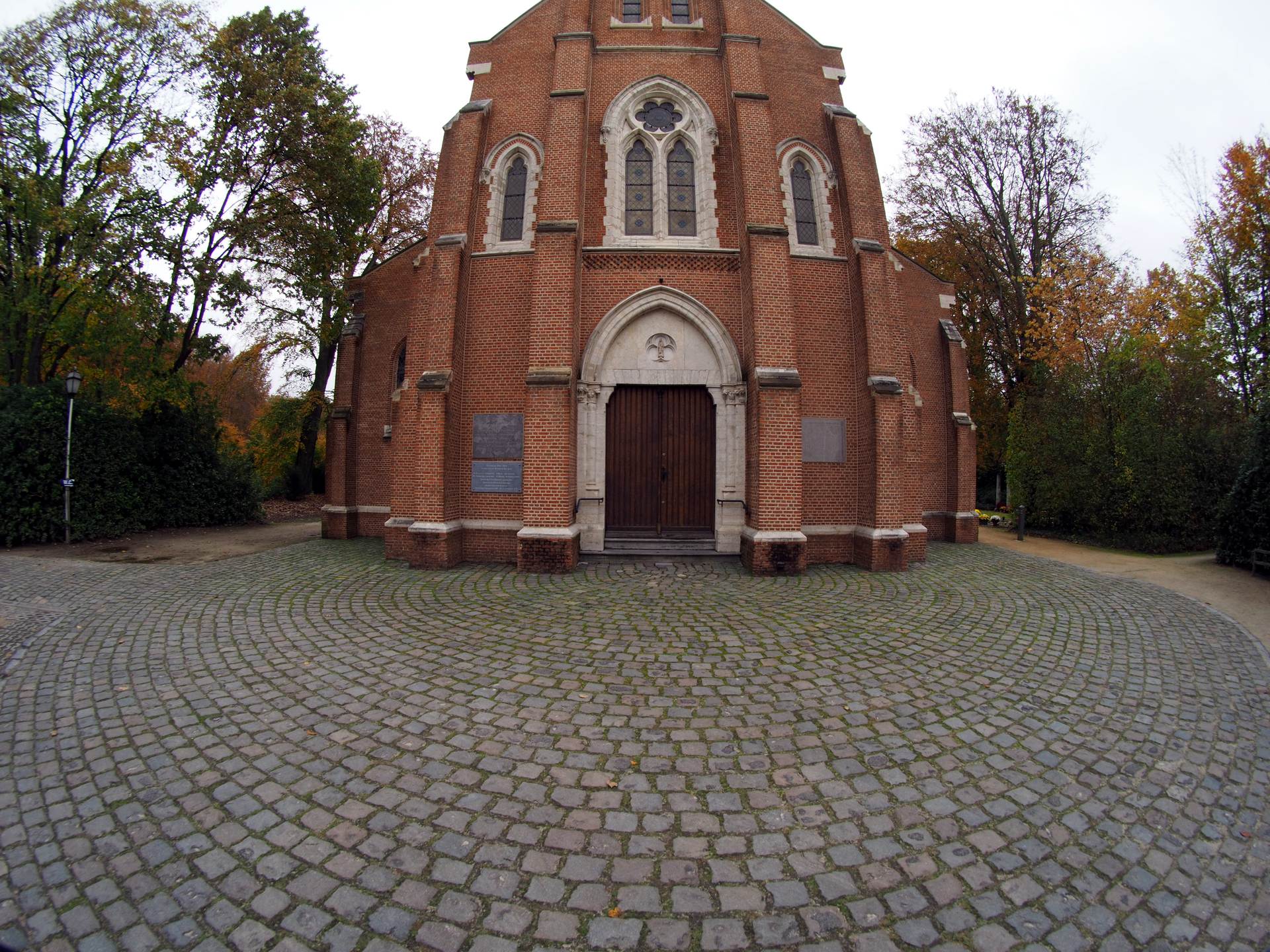
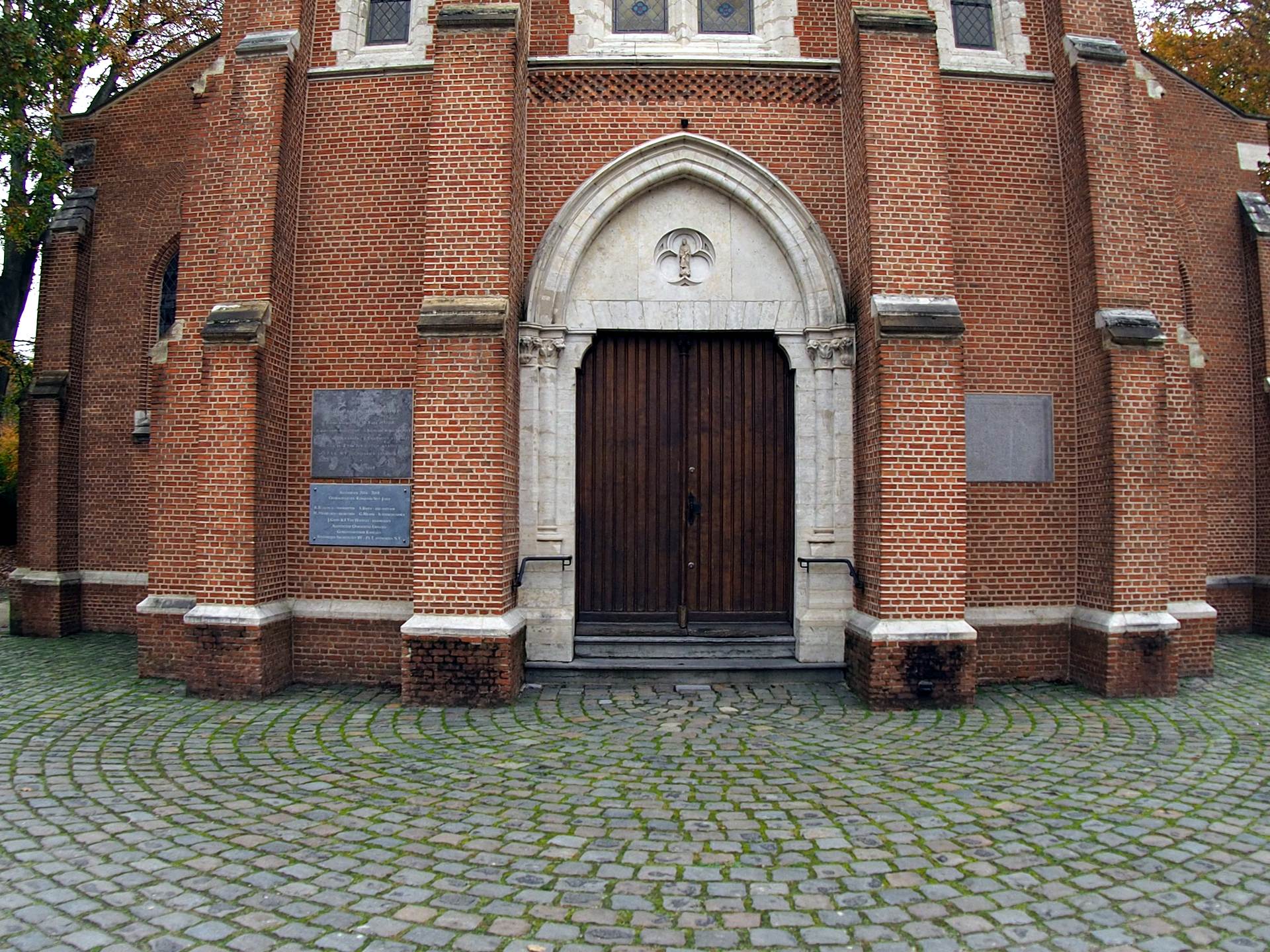
Wrapup and Conclusion :
Reviewers who compare this lens to lenses that cost three times, five times, and even more than ten times the price of this small lens are not making a fair comparison. Photographers who purchase this lens and later express dissatisfaction with the quality, completely tearing it down, should have thought more carefully about the intended use of this lens. If top quality is crucial, why opt for a €60 lens instead of a €600 one? It seems a bit foolish to expect the same level of quality, in my opinion. I chose this lens for its compact size, attractive appearance, and unobtrusiveness. I view it as a creative lens, similar to a Holga lens but significantly better, and it falls more in line with its price range. Therefore, I have no complaints about the image quality, and I don’t consider it a wasted investment, unlike some might.
I hope you enjoyed my review,
Marc.
Sample Images (click picture to go to gallery):
Clicking on the collage photo below will take you to my website “La Gallerie” where you can find these sample images. Many of the photos were taken on different days in October/November, and unfortunately during a very wet and dark period.
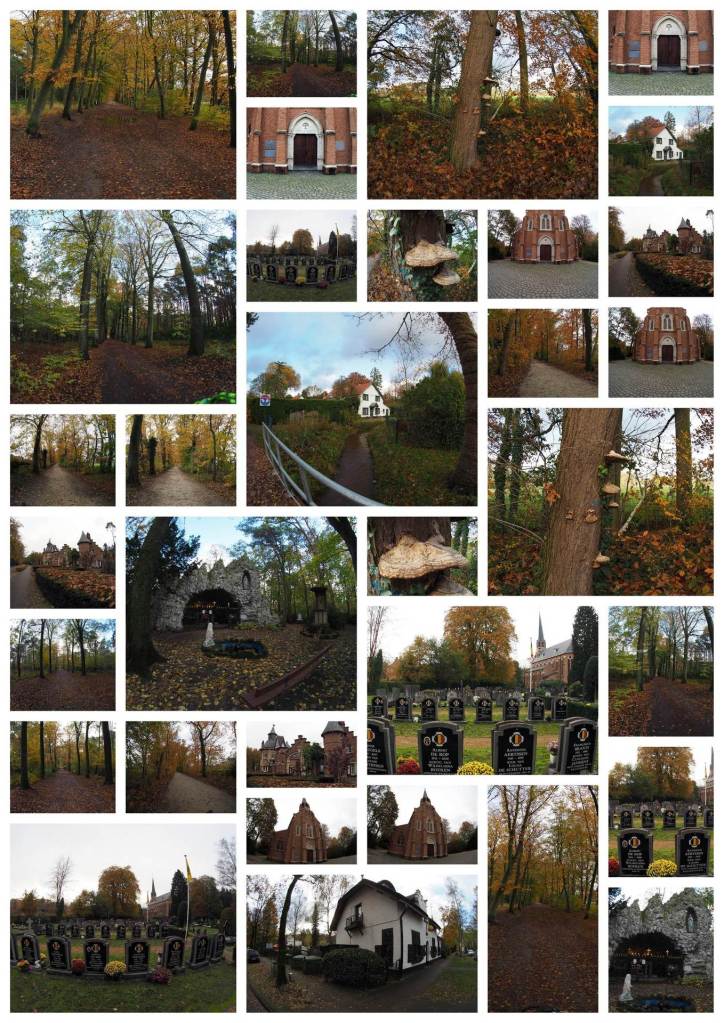
Links :
Review from Shesmu on mu-43 : https://www.mu-43.com/threads/8mm-f3-8-cctv-fisheye-mini-review-and-samples.85212/
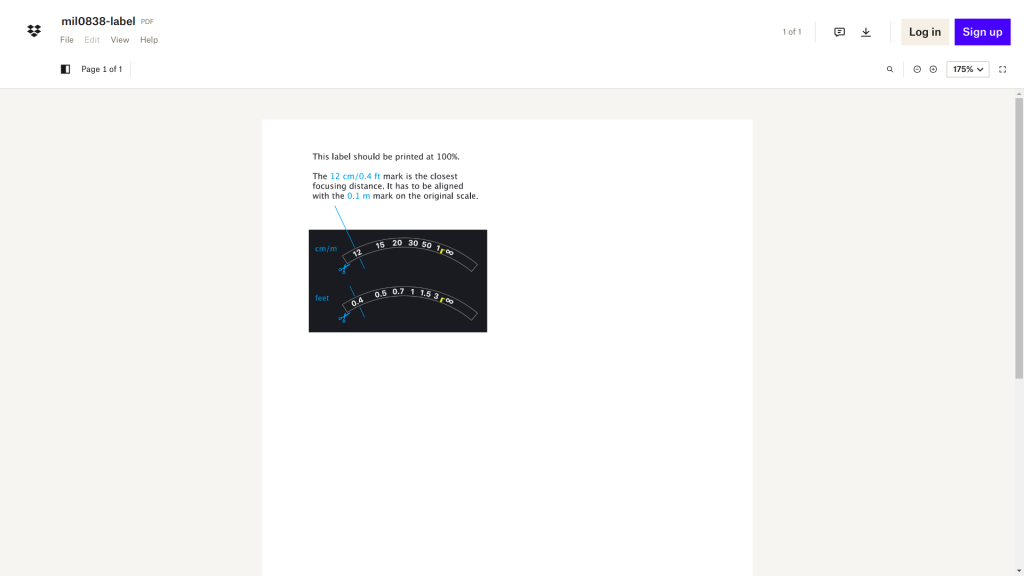
Custom lens scale by Shesmu :
https://www.dropbox.com/s/h6n47iijydbkubz/mil0838-label.pdf?dl=0
Pixco website : https://pixco.com.cn/products/pixco-8mm-f3-8-fisheye-cctv-lens-c-mount-micro-4-3-mount
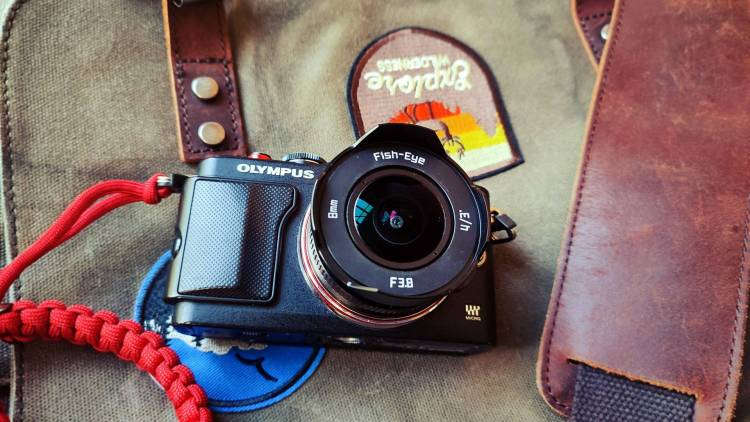
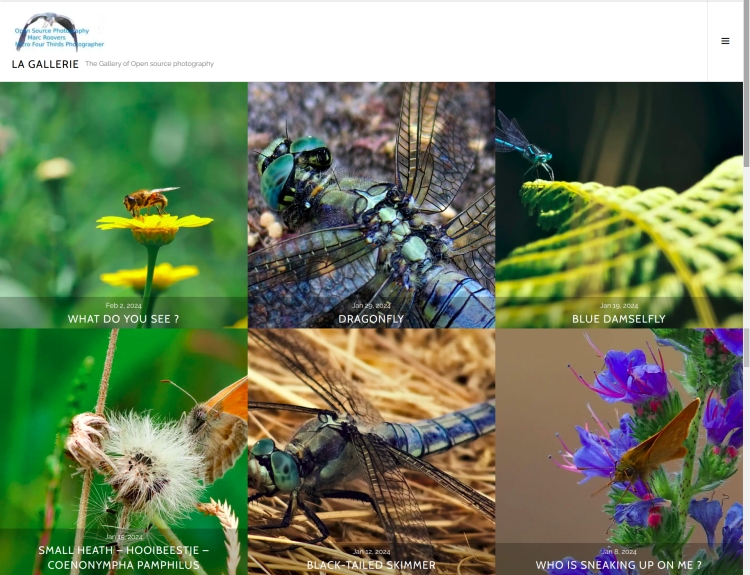
The photo gallery of Open Source Photography, Olympus micro 4/3 system, Vintage Lens Photograpy, Film Simulation, PictureFX, HDR – Photographer : Marc R.
Discover more from Open Source Photography
Subscribe to get the latest posts sent to your email.


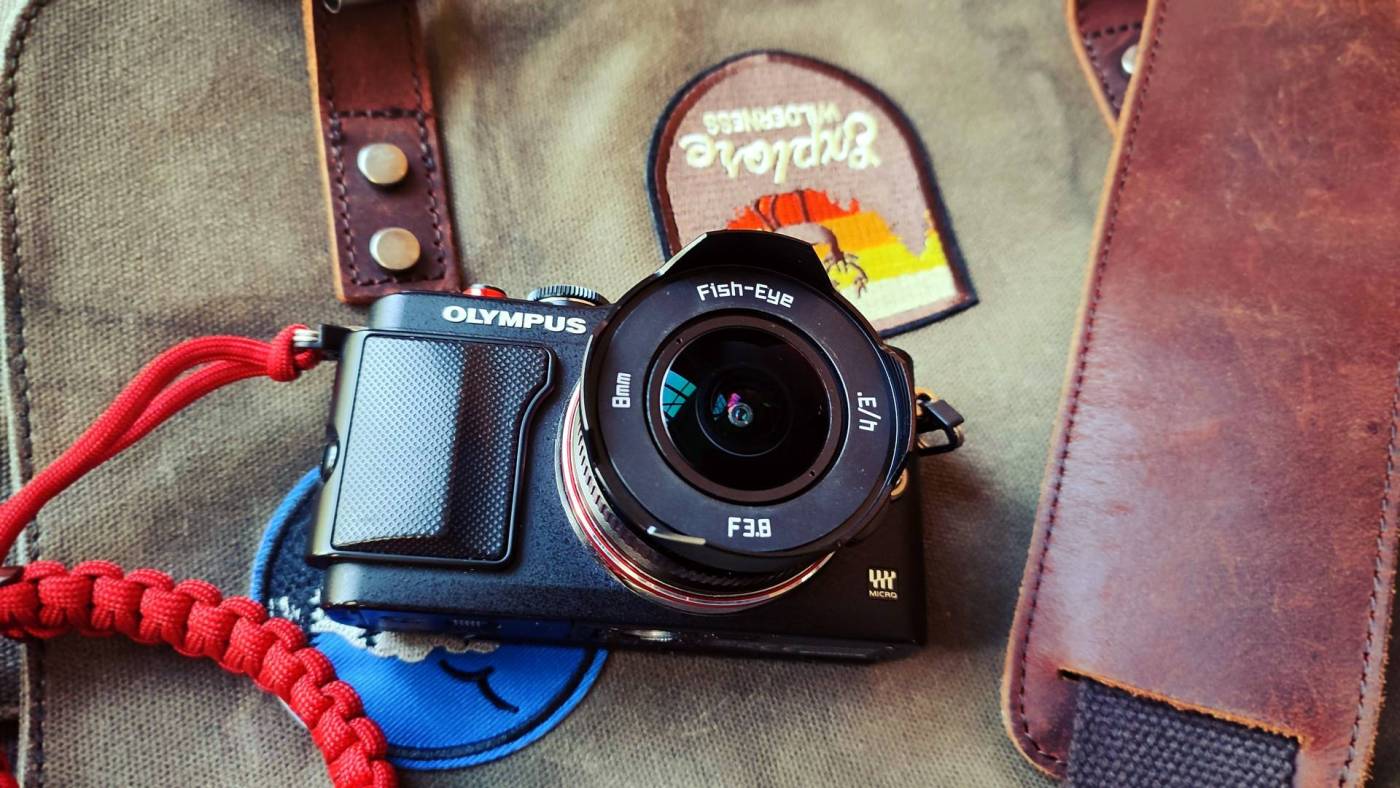

I love my Fisheye as you know, but I haven’t used it in such a long time! I will have to dig out it.
LikeLiked by 1 person
Hey Mark! well, yes, I understand what you are saying, it is not a lens that you use continuously, I do think that it is one of those lenses that when you use it, it is difficult to keep your hands off it, difficult to explain, but I think you understand me.
LikeLiked by 1 person